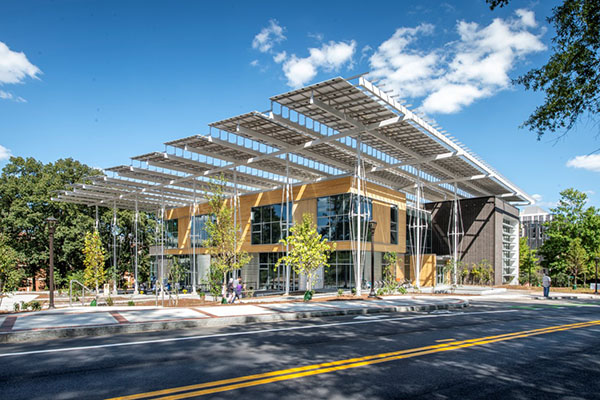Expertise
Integrating Sustainable Design Strategies
The primary goals of sustainable design are to reduce the negative impacts of building and create buildings that have a restorative, positive impact on their inhabitants and the environment as a whole. Lord Aeck Sargent has long practiced sustainable design and has a number of professionals who have been accredited by the U.S. Green Building Council’s LEED Green Building Rating System for facilities incorporating sustainable design.
When used as an integrative strategic planning tool, sustainable design produces buildings that increase occupant productivity and health while lowering overall life-cycle costs can actually reduce first costs when implemented holistically during the design phase. Employing sustainable design strategies can have a significant impact on success of the finished building. For example, when daylighting is incorporated as a holistic design strategy, reduced life-cycle operating costs, increased occupant health and reduced first costs can be achieved. In this way, sustainable design can be seen as a means of optimizing the design of the building.
Moreover, the enormous value, as documented by case studies in Greening the Building and the Bottom Line, written by Joseph J. Romm of the U.S. Department of Energy and William D. Browning of the Rocky Mountain Institute, is in increased worker productivity and reduced absenteeism. To effectively understand this benefit, we must look at buildings in terms of their life-cycle costs, factoring worker productivity into the equation. Lower operating cost thus becomes a secondary financial motivation.
For LAS, sustainable design incorporates the typical strategies of appropriate building orientation, water and energy efficiency, sensitive resource and material selection, a healthy indoor environment and, most importantly, durability, flexibility and maintainability. The best intentions, with respect to the typical sustainable strategies, are for naught if the building cannot be effectively utilized by many generations or, if torn down, cannot be recycled effectively. Sustainable design is fiscally and socially responsible.

